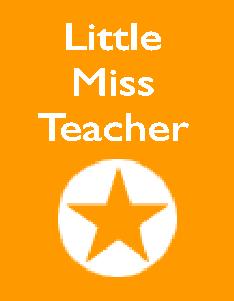Spelling Lists
I have recently been surfing around a lot of teacher message boards and blogs and I have noticed that there are often lots of requests from teachers needing advice on what spellings to give their children.
Obviously, you need to give the children the spellings they need rather than just follow any old schemes order because they claim to be Year 3 spellings! I thought I would share with you what I use and how I work out what to teach my Year 3 class.
I base my spelling programme on the Jolly Grammar books. I know these are designed for years 1 and 2. However, we all have children who find spelling difficult or older ESL children to work with and the ideas in Jolly Grammar can be very simply adapted for use with older children.
I always start the year with an assessment of the sounds and alternative spelling patterns the children know. It sounds tricky, but doesnt take long and can be done as a whole class. I have a list of the sounds they should know, three sheets in total depending on age and ability. The most basic is the 42 sounds assessment sheet, the next is an assessement sheet of sounds in Jolly Grammar 1 and the third is from Jolly Grammar 2. I have all the children's names down one side, and the sounds along the top. It quickly becomes visible which sounds the children aren't sure of, and that is where I start.
Why start at the beginning if the children know them??
With my Year 3's this year, almost all of them could use the sounds on the JG1 sheet, so I am working off the JG2 sheet, about half way along.
You don't actually need to have the Jolly Grammar books. I think Jolly Grammar provides a good order to follow for spelling. You can choose your own words for your spelling lists based on the sound you are teaching or dip into any scheme you have in school already and link the words from that. This just provides you with an order to follow, meeting the needs of your class due to that initial assessment.
We have Jolly Grammar and Nelson Spelling at school. I use Jolly Gramar spelling lists for some, and use the words for the same sound from Nelson for other children. As I said, it is easily adaptable.
I think the most important thing is to actually TEACH the children about the sound you are studying. I know when I first started teaching ten years ago, and knew no better, I used to send spelling lists home for the children to learn, but I never actually TAUGHT them the sounds. Thank goodness I have improved since then! Still, I am sure I am not alone in this. Jolly Grammar gives very simple but excellent lesson plans explaining the rules for each sound (such as when to use /igh/ intead of i magic e or y). For anyone new to teaching or those who are a bit confused about teaching spelling, I would highly recommend it.
Please download my assessment sheets by clicking the links above, if only to get an idea of an order to follow if you are unsure. Adapt them as you like. leave a comment or e-mail me if you would like further information.
Hope this is helpful.
Deb





3 Comments:
Thanks for this Debs. We don't have a scheme in school for spelling and are expected to take the lists from the National Literacy Strategy. Would you recommend a particular spelling scheme?
My wife did a small research project on the best way to learn spelling two years ago and if I convince her I'll ask her if she can write a short article about it for my blog. I've put up a few ways that I teach the children their spellings based on that research if you are interested.
11:17 pm
I will pop over and read it now Andrew.
You know, I don't know what year you teach! I know there is PIPS and the pther NLS spellings, but for KS1, I feel, it relies too much on sight words and not enough phonics teaching.
They are now acknowledging synthetic phonics approaches, which research proves, really do work!
There are lots about, Top-To-Toe, Ruth Miskin, Jolly Phonics. JP is my favourite as it is so easy to use for me as a teacher. However, it is not my bible, my be all and end all. It is what I use as my foundation, but obviously support it and alter it as I see best for my class. Having used it for the last 4 ears or so, I have proof that it reslly doea work.
Deb
5:55 am
I teach year 6, but thinking about scheme for whole of Keystage 2.
3:31 pm
Post a Comment
<< Home